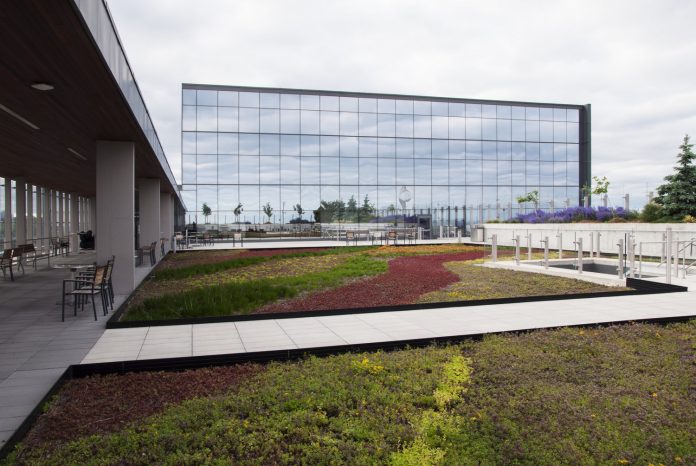Ontario’s roofing industry can look forward to continuing growth, as workers meet higher safety standards and contractors combine conventional materials and techniques with alternatives – reflecting both heritage and environmental requirements.
The federal government’s Job Bank reports that approximately 8,400 individuals work as roofers in the province; of which 18 per cent are self-employed.
“The demand for roofers and shinglers will likely remain healthy over the next few years as the construction industry should see a fair level of activity,” the Job Bank report says. “Steady business activity should also bode well for this trade, as commercial construction stays moderate. Further, there are several mixed-use condominium projects in the works in some of Ontario’s largest urban centres.”
“Higher population growth in the province should continue to spur residential development in some areas, though regulatory changes could soften the housing market.”
The roofing industry has a built-in safety net: Even though the construction industry is cyclical, ongoing maintenance requirements mean that there is always work to be done, even in the toughest recession.
Green roofs continue to be an important sub-set of the market, though the GTA region, which had led all major metropolitan cities in the U.S. and Canada for the amount of vegetated roofing installed in 2016, declined to a more modest sixth-place position in 2017, according to data from Green Roofs for Healthy Cities (GHHC), the North American green roof and wall industry association.
Overall GRHC reported more than 1,000 completed projects in 39 U.S. cities and five Canadian province, resulting in 5,389,749 sq. ft. of green roofing. The Toronto area volume was close to 300,000 sq. ft. in 2017, according to GRHC.
“Changes in consumer tastes and architecture are expanding the work of roofers and shinglers,” the Job Bank report says. “There is a growing demand for green or vegetated roofs, solar array rooftop systems, and energy-efficient materials. This may create additional opportunities as well as training needs in this trade as individuals and companies upgrade existing roofing systems.”
Safety continues to be a major concern within the industry. One safety consultant said at a recent Greater Ottawa Home Builders Association (GOHBA) meeting that the safety practices and standards of the ICI (industrial, commercial and institutional) sector have become truly solid, with workers properly trained and equipped with fall protection systems.
The story isn’t so good in the residential sector. While the frequent sight of workers on residential roofs without any fall protection devices has diminished in recent years, the consultant says that workers often fail to follow proper procedures in ensuring their equipment is in proper use.
This failure can prove costly, as Ministry of Labour inspectors have been increasing their coverage of roofing projects, levying fines and penalties on the workers, their supervisors and the companies for which they are employed if they see violations. And the consequences can be downright critical if there is an injury or death on the job.
On a more positive note, even as new approaches including solar arrays and green roofs demand new skills and materials, traditional and heritage work has brought to the forefront opportunities for genuine craftsmanship.
As an example, the rehabilitation project at Ottawa’s West Block Parliament Hill was one of 15 projects that received a North American Copper in Architecture Award (NACIA) for its copper roof replacements.
“When the West Block Rehabilitation Project started in 2007, the copper roofing was identified as needing repair, preservation or replacement,” the award citation says. “Replacement was done in kind, replicating the language of the original installation. Where appropriate, improvements to the details were introduced to increase durability.” The project’s sheet metal contractor was Heather and Little Ltd., working with designs from Arcop/Fournier Gersovitz Moss Drolet Architects in joint venture.
As well, the NACIA awarded a heritage award for the Union Station project in Toronto, recognizing sheet metal contractor Semple Gooder Roofing Corporation and architect +VGArchitects – The Ventin Group Ltd.

